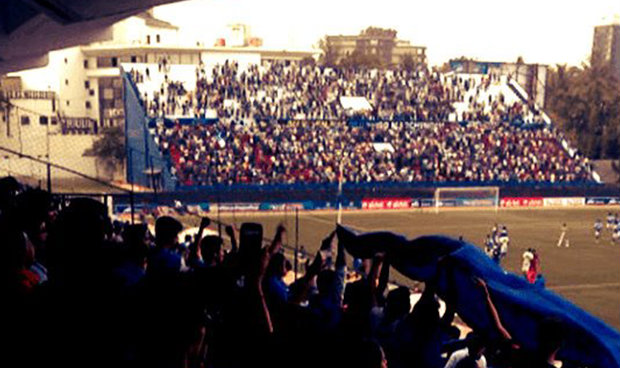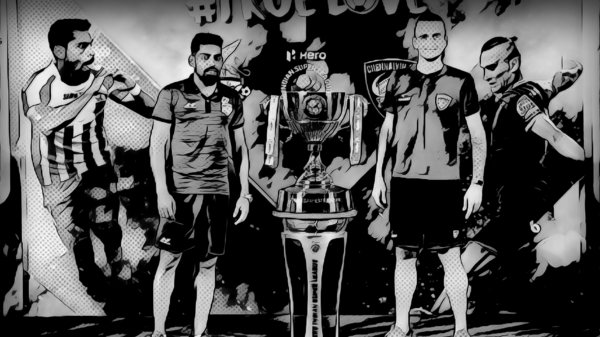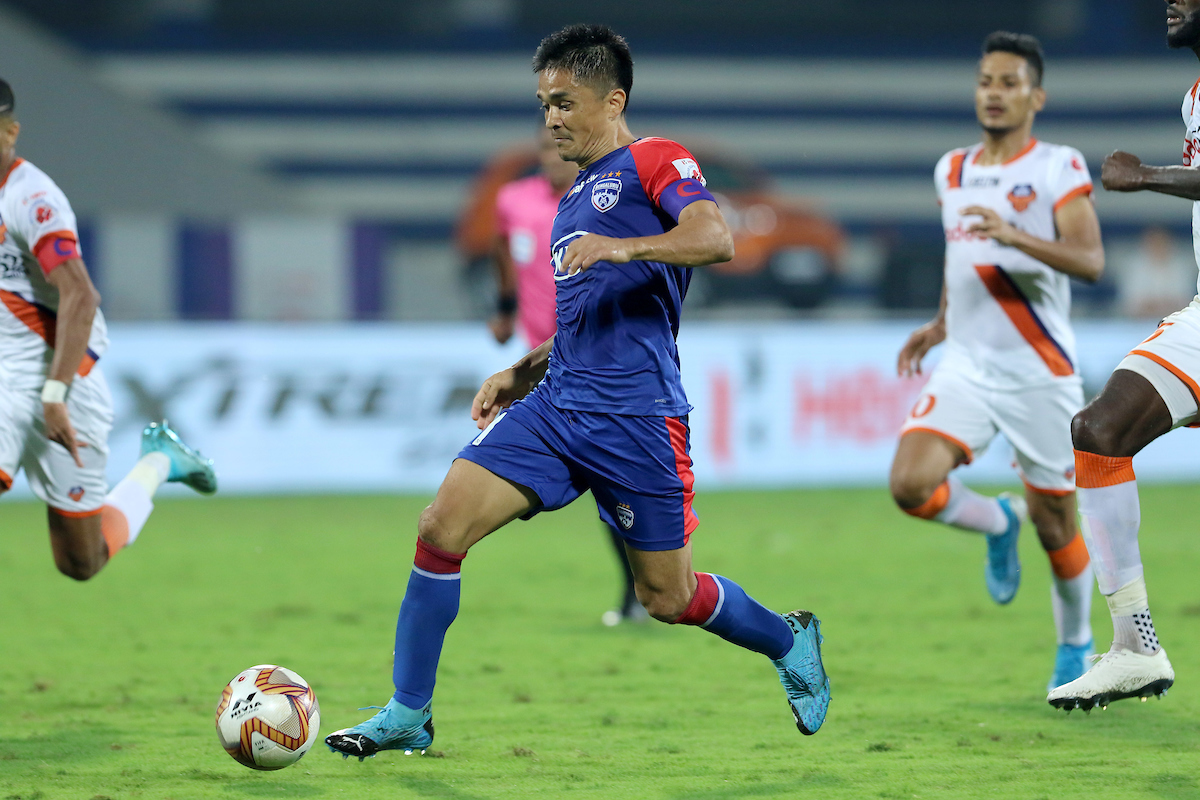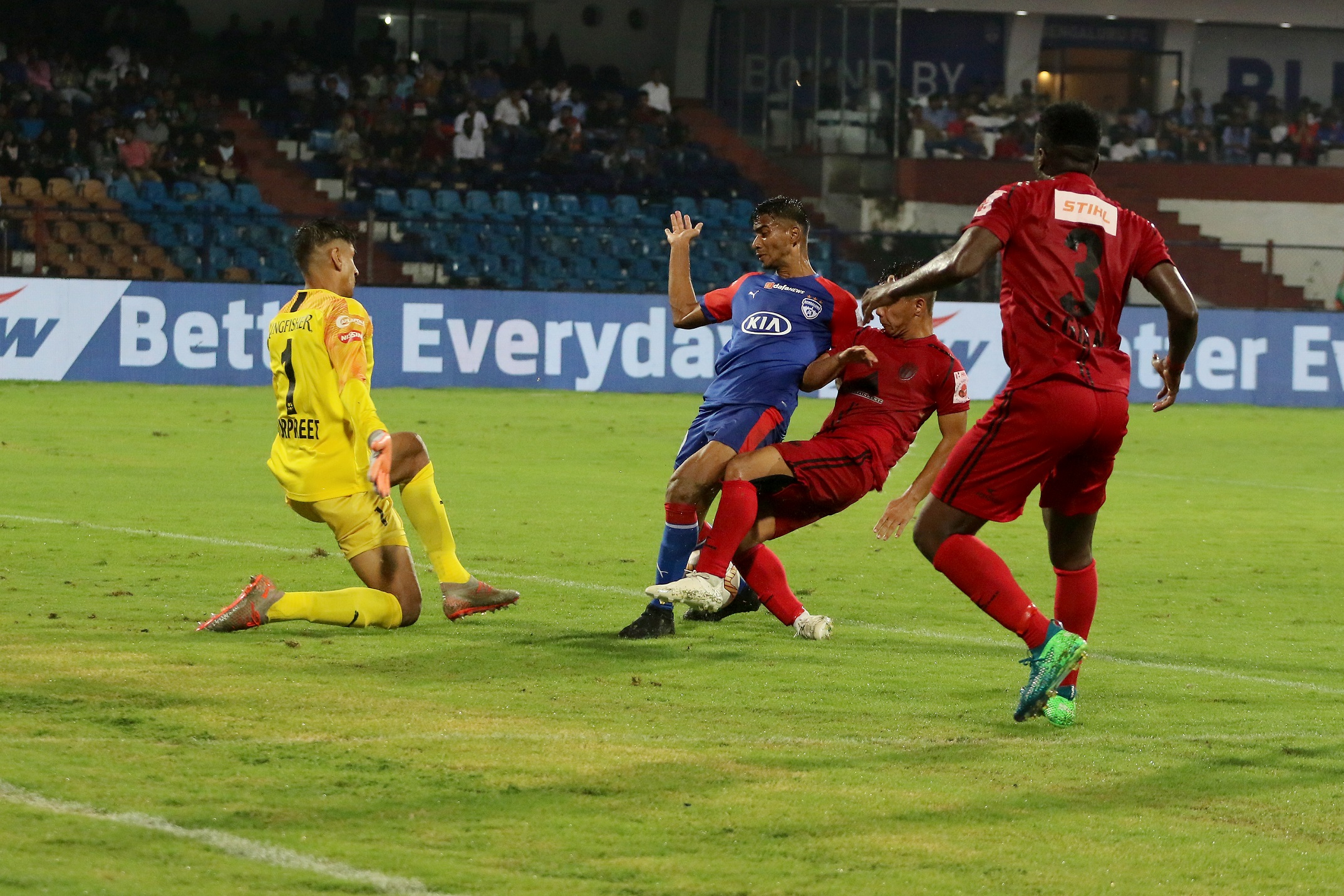In all the glitz & glamour of the Indian Super League, there is a future of the sport that needs to be considered. Sami Faizullah has a look at just what Indian football needs.

This particular piece is actually the third part of a mini-series on Indian football. The title has been slightly altered as the original may well have been misleading to the content contained here. The first part briefly stated what positives the Indian Super League brings to Indian Football at large, and the second had a bit of a rant against the whole concept. This third part though, looks ahead into the future of the sport in the country, beyond the 10 week tournament and suggests what steps can/should be taken to truly ensure this is the “birth of a football nation” (or something along those lines).
UPDATE: This article featured in Goalden Times’ Word Ball 2015 in the Contemporary category.
Merging the two leagues to form a sustainable product
Larger than life celebrity owners, foreign stars of yesteryear and an extravagant marketing campaign have done wonders to rope in followers from the population of a billion people. Those factors have been crucial in getting previously disinterested individuals to develop an interest in football. A large faction of whom will turn up at stadiums, indulge in social media discussions, and passionately defend their team will do so due to the involvement of Hrithik Roshan, Abhishek Bachchan, Sachin Tendulkar, Sourav Ganguly and co. It certainly annoys many that this country still requires it’s Bollywood stars to achieve it’s sporting objectives, but it’s a marketing move that certainly draws the best results.
But this extravagant product isn’t sustainable in the long-run. As discussed in the previous piece, the commitment of these popular owners will always be in question, the likes of Alessandro Del Piero & Robert Pires are unlikely to ply their trade in the Indian sub-continent if it involves a regular 9-10 month league campaign; and without these two crucial factors, interest levels are bound to drop.
There have been suggestions of making the Indian Super League the regular top division of Indian football, to do away completely with the rather unsuccessful I-League. But here’s the thing, the moment you make the Indian Super League a regular 9-10 month league campaign, and the fact that the Asian Football Confederations’ 3+1 rules comes into the picture, added to that the natural loss of those factors mentioned above, how different will the Indian Super League then be than the existing I-League? If Atletico De Kolkata, for example, becomes a regular club (and not a franchise), then it most certainly would lose Luis Garcia’s involvement while retaining someone like Fikru Teferra in the side. With all due respect to the Ethiopian striker, any of the existing I-League clubs of Kolkata would be able to attract Teferra themselves.
The product that is the Indian Super League in its current format exists and works only for this short duration of time, anything in a large degree would be difficult to sustain. Its current format allows the inclusion of 14 foreigners per team, it permits the use of foreign referees, it attracts corporate sponsors in tandem with the hype among the general population; but if all this was turned into a long-term system, what does the ISL offer that the I-League already isn’t?
The ISL certainly has been an excellent catalyst in creating atleast some form of a football culture in cities like New Delhi & Chennai which previously have lacked it; setting these franchises into proper football clubs would see a major benefit. But what would Atletico de Kolkata offer (as a club) that East Bengal or Mohun Bagan isn’t?
Any product that works for the sustained development of Indian football would have to be more closely modeled to suit the I-League than the Indian Super League. Clubs like Bengaluru FC, Pune FC and Shillong Lajong is needed for a long-term plan, not franchises. Only then will there truly be a positive effect (along with the fact that the ‘FC’ in some of the ISL franchises will finally make sense).
It has been rarely mentioned, but merging the two leagues in some form is the only way to move ahead. Having two top division leagues isn’t just absurd, but it’s counter-productive. The hype & excitement around Indian football as seen presently should remain, but I sincerely hope there isn’t a second edition of the Indian Super League. Rather a brand new merged top division league emerged on the back of this first edition.
The need for supporters, not fans
Expanding on the point of how celebrities are needed to sell the product, it’s true that they deliver results. But are those results really what we are looking for? An interest develops, and those attracted by actors & cricketers become ‘fans’ of their franchises, but do they become supporters? Will they develop an in-built loyalty? Will they cheer louder when their teams’ trailing? Will they turn out when their teams’ hit a poor run of form? Will they be bothered with how their franchise is improving football at grassroots level and in the community? A large portion really won’t. And, to be fair, this is an issue even with I-League clubs. An Indian mentality I guess.
While the biggest positive the Indian Super League is bringing is the interest among the general population, what benefit does this truly have for the sport in the country? Many agree that a long-term grassroots plan, experienced coaches, financial investment, quality football are all more pressing issues than establishing popularity for football. Why then is it so important that people turn out to the stadium? Watch the game on television? Engage in banter on Social Media? Some sports fanatics may even go to the extent of signing up on different platforms (here, for example) to become what the Internet calls ‘Influencers’, so they can gain access to exclusive sports events and products. Part of the fan frenzy, but interesting nevertheless.
Well ultimately, every sport requires an audience to ensure it succeeds in the long run. Without fans, clubs are nothing. Without attracting the public, the sport becomes meaningless. But the issue here is that many are only interested because of the contributing factors that simply have nothing to do with football. Sure there’s hype among the population but unless it extends beyond the duration of the tournament, and crucially, even in instances of failure, there really isn’t any point in all of this. Fans are being attracted by various franchises that last for a duration of 10 weeks (at this point of time). All India Football Federation president, Praful Patel, made sure he mentioned the I-League during his opening ceremony speech, and pointed out that it isn’t being neglected. His comments were well appreciated because uptil now, it seemed like the Indian Super League product was being promoted over-an-above the I-League and indeed the national team (more on that later).
But if we were to put two and two together based on the philosophy that the ISL is meant to create an interest in football and hope that trickles down into the I-League and other sections of football in India, isn’t that going against anything with even a tinge of ‘loyalty’? Picture this, fans are being told to support Atletico De Kolkata, and when the Indian Super League is done and dusted, they are required to make their allegiance to a whole different football club (East Bengal, Mohun Bagan, Mohammedan Sporting etc).
The states of West Bengal, Goa & the eight in the North East have already had a large football culture with passionate loyal supporters. Shillong Lajong for instance, have constantly roped in capacity attendances in the I-League, despite experiencing little success. Ultimately, people in these states didn’t really need an attraction to football to be created. They just needed a platform to further popularize the existing clubs. Again, here’s why clubs like Bengaluru FC & Pune FC are needed rather than franchises. Both these cities lacked an Indian football culture, but the moment they were given a local club to support, the response has been beyond expectations. Bengaluru FC even attracted huge crowds for their I-League victory parade, something that hadn’t taken place in Indian football earlier. The now famous West Block A stand has become immensely popular for its regular chants & songs throughout games, while more recently the club used its supporters to reveal and promote the new home kit for the season. The city always had football supporters, just no club to support. The cities of New Delhi, Chennai etc need similar clubs to be created to truly attract supporters (and not just fans), and create a sense of loyalty & passion within them.
Though those that do get attracted by the glamour of the ISL might just develop into football supporters, it’s pointless unless a club that competes in a regular season format is there to be supported. We’ve stated how the Indian Super League franchises aren’t a sustainable long-term model, and along with all the other factors, having a team that plays in a regular season is important from the point of view of creating supporters as well.
Another point that needs to be made here is the target audience with regards to football supporters on one hand, and fans on the other. We’ve long had discussions in European football about how ticket prices have meant that it’s almost impossible for a working class individual to regularly attend matches; the sport, it seems, has become for the upper class of society. Sadly, this same issue arises in Indian football as well; and it’s certainly a more drastic effect in the sub-continent since a majority of the population (and existing football ‘supporters’) would be classified into the lower class of society. The price of the lowest ticket for an Indian Super League match is almost as high as the most expensive one in the I-League. While the ISL has created and attracted a whole new class of supporters, it seems to have completely ignored another.
Loyalty among supporters and affordable prices is possible in a long-term format, rather than one that looks at breaking even after 3 months.
The Trickle Down effect & grassroots football
Despite all the criticism, a point that needs to be remembered (which was noted to us by journalist CP Daniel in this interview and further enhanced by the likes of Praful Patel) is that ultimately the goal is to improve Indian football in general and the I-League in particular.
While it’s unlikely any trickle down effect will result in the legendary superstars currently a part of the ISL to transfer into the I-League, it does create the possibility of whole other factors to positively effect Indian football.
The need for quality & experienced foreign coaches, and development of the Indian ones, is paramount for the sport and certainly more important from a long-term point of view than quality foreign players. The likes of current FC Goa coach, Zico, have publicly shown an interest in Indian football in the past, even before the concept of ISL was created. The hope is that others like him who are a part of the ISL do make that move from temporary coach of a glamorous Indian league of 10 weeks to a long-term Indian league beyond 10 months. These coaches have the ability to transform the way the game is played, right from the youth levels upto even the national team. The level of football played is ultimately what develops the sport, it’s players and the clubs within it.
Although the likes of Liverpool have already taken steps into entering the Indian market with the establishment of an academy in Pune, followed by a similar move from Paris Saint-Germain in New Delhi and Boca Juniors before them in Bangalore, the ISL has further attracted foreign clubs into the South Asian country. Atletico Madrid are co-owners of the Atletico de Kolkata franchise, Fiorentina have set-up a deal with FC Pune City and Feyenoord Rotterdam have also partnered with Delhi Dynamos. The hope is that these clubs, and others in the future, are attracted long-term too. The need for foreign involvement in Indian football is needed more for grassroots development than in any other area, given the resources & expertise that come with it.
Some of the ISL franchises have taken a step into grassroots development while founding chairperson of the Indian Super League, Neeta Ambani, has regularly made a point to mention this in any public comments that she makes. This again leaves even the most strongest of skeptics feeling a bit positive because a long-term grassroots plan will have the most impact on Indian football, and any of its long-term goals.
The National Team
Ultimately, what Indian football needs is the improvement and growth of the national team. Qualifying for a World Cup remains the primary dream for anyone associated with the sport. The Indian national team has for far too long been flirting with embarrassing FIFA rankings in the bottom half of the table, while regularly struggling to beat even the most weakest of teams (including a recent defeat to arch rivals, Pakistan). Yes a strong domestic league ultimately has it’s positive effect on the national team, but a country like India that is already struggling in the sport can’t afford to have a situation where a ‘club vs country’ issue develops like we constantly see in England. If inspiration is to be taken, Indian football will need to be based more on the German football model, rather than the more glamorous one in England.
Recently there was a lot of uproar on Social Media as just days before the ISL was set to kick-off, India were participating in a friendly with Palestine (which they ultimately lost 2-3). Yet not a single mention was given by any of the 8 franchises on their well established Social Media platforms, nor any comment from the official Indian Super League accounts, and shockingly not even by the official body, the AIFF. Yes it was just a meaningless friendly, but given the hype the ISL and it’s franchises generated, establishing vast fan bases, a simple comment would certainly have had a positive effect.
But even with English football being light years ahead of India, a similar disinterest in the national team is at risk. This isn’t helped by the fact that the Indian national team captain and currently the country’s most popular player, Sunil Chhetri, isn’t even participating in the ISL.
Steps need to be taken to ensure that above the Indian Super League, and beyond the I-League, focus remains on improving and establishing the national team; any trickle down effect should be directed there as a priority. Indians are generally passionate people, so even the most casual football fan will grow into a passionate national team supporter with a simple push. If someone like Zico who worked wonders for another Asian giant were to show an interest in the national team, then the Indian Super League would have had one of the most positive effects on Indian football that one can imagine. Given that India will be playing host to the U-17 World Cup in 2017, ensuring that the generation of players that represent the country at that tournament have reaped maximum benefits from whatever the game is offering domestically would be an excellent start for the future of the sport..
Though I remain a skeptic of the whole product based on what I think will happen, I’m ready to eat my words if the Indian Super League does end up taking any of the right steps. Indian football doesn’t have time for an ISL vs I-League war; Indian football is on the minds of all isn’t it?
Written by Sami Faizullah. Chief Editor of this Website.

























































